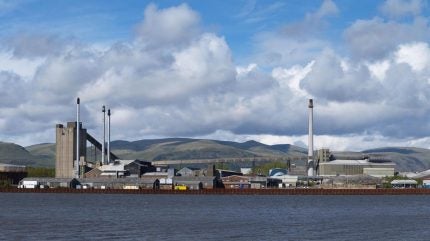
Glass packaging giant O-I Glass has announced a collaboration with GridBeyond to implement a battery storage system at O-I’s Alloa plant in Scotland, UK.
The project aims to enhance energy efficiency, grid stability, and sustainability for O-I’s operations.

Discover B2B Marketing That Performs
Combine business intelligence and editorial excellence to reach engaged professionals across 36 leading media platforms.
The centrepiece of the initiative is an 8MW battery storage system coupled with an AI-powered energy management system (EMS) from GridBeyond.
This intelligent system will strategically charge the battery based on real-time grid conditions.
The solution offers a range of advantages for both O-I and the local electricity grid:
- Grid balancing and peak load reduction: During peak demand periods, the battery system can discharge stored energy, reducing strain on the grid and potentially lowering electricity costs for O-I.
- Renewable energy optimisation: The system can prioritise charging the battery system with renewable energy sources when available, promoting sustainability.
- Enhanced resilience: By acting as a backup power source, the battery can mitigate the impact of brownouts, preventing production disruptions at the O-I plant.
O-I said it is committed to reducing its environmental footprint.

US Tariffs are shifting - will you react or anticipate?
Don’t let policy changes catch you off guard. Stay proactive with real-time data and expert analysis.
By GlobalDataThe project is expected to contribute significantly to this goal by achieving an estimated annual reduction of 240 tonnes (t) of carbon dioxide (CO₂) emissions at the Alloa facility.
“Our energy strategy is grounded in resilience, innovation, and transformation, to embrace cutting-edge solutions that are scalable and sustainable,” said Randy Burns, chief sustainability and corporate affairs officer for O-I.
For GridBeyond, this collaboration aligns with its mission of facilitating businesses’ energy transition towards a net-zero future.
The initiative underscores O-I’s commitment to environmental responsibility and highlights the potential of AI-powered battery storage solutions for the packaging industry.
The project’s success could serve as a model for other manufacturers seeking to optimise energy usage and reduce their environmental impact.





